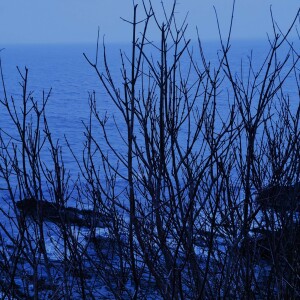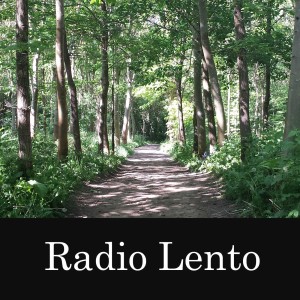
Being out on a headland is an experience as fresh as it is freeing. Fresh because these steep craggy places resound continuously, without end, with the effects of ocean and wild weather. Freeing, because they let you feel with all your senses, the reality of the world. A world seven tenths covered in water.
Like bathing in forest sound created by the micro-turbulances of air moving through countless leaves and branches, a headland soundscape is also formed from panoramic layers of natural white noise, created by the movement of water over countless rocks. Or should we call it white sound? Noise is usually associated with what is unwanted. These noises are wanted. So good, so therapeutic, that we feel it's worth travelling long distances with the Lento box to find them, and record them.
The tricky bit is capturing the layers of white sounds from the landscape when we get to it. Headlands are windy locations, and the noise of wind cuffing in the microphones is what we work to avoid. The sound has to be from the landscape itself, and not from the microphone baffles.
Here is another passage of time we recorded earlier this year at the headland in West Looe, Cornwall. Light rain falling delicately, and spatially, onto new green leaves, against a wide panoramic backdrop of well dispersed ocean breakers. It is a night landscape entirely free of human made noise. Between the slow undulating washes, a passing seabird can be heard mid-way through the capture.
* You can hear daybreak from this same location in episode 221.
** Our last four episodes have been *sleep safe*. If we have helped you rest this month, could you buy us a coffee?
More Episodes
 2024-06-16
2024-06-16
 1.6k
1.6k
 2024-06-09
2024-06-09
 1.8k
1.8k
 2024-06-02
2024-06-02
 1.4k
1.4k
 2024-05-25
2024-05-25
 1.4k
1.4k
 2024-05-13
2024-05-13
 1.3k
1.3k
 2024-05-04
2024-05-04
 1.7k
1.7k
 2024-04-29
2024-04-29
 1.8k
1.8k
 2024-04-22
2024-04-22
 1.5k
1.5k
 2024-04-14
2024-04-14
 1.4k
1.4k
 2024-04-08
2024-04-08
 1.4k
1.4k
 2024-03-29
2024-03-29
 1.4k
1.4k
 2024-03-24
2024-03-24
 1.3k
1.3k
 2024-03-17
2024-03-17
 1.7k
1.7k
 2024-03-10
2024-03-10
 2.1k
2.1k
 2024-03-03
2024-03-03
 1.7k
1.7k
 2024-02-25
2024-02-25
 1.9k
1.9k
 2024-02-11
2024-02-11
 1.8k
1.8k
 2024-02-05
2024-02-05
 1.9k
1.9k
Create your
podcast in
minutes
- Full-featured podcast site
- Unlimited storage and bandwidth
- Comprehensive podcast stats
- Distribute to Apple Podcasts, Spotify, and more
- Make money with your podcast
It is Free
- Privacy Policy
- Cookie Policy
- Terms of Use
- Consent Preferences
- Copyright © 2015-2024 Podbean.com






